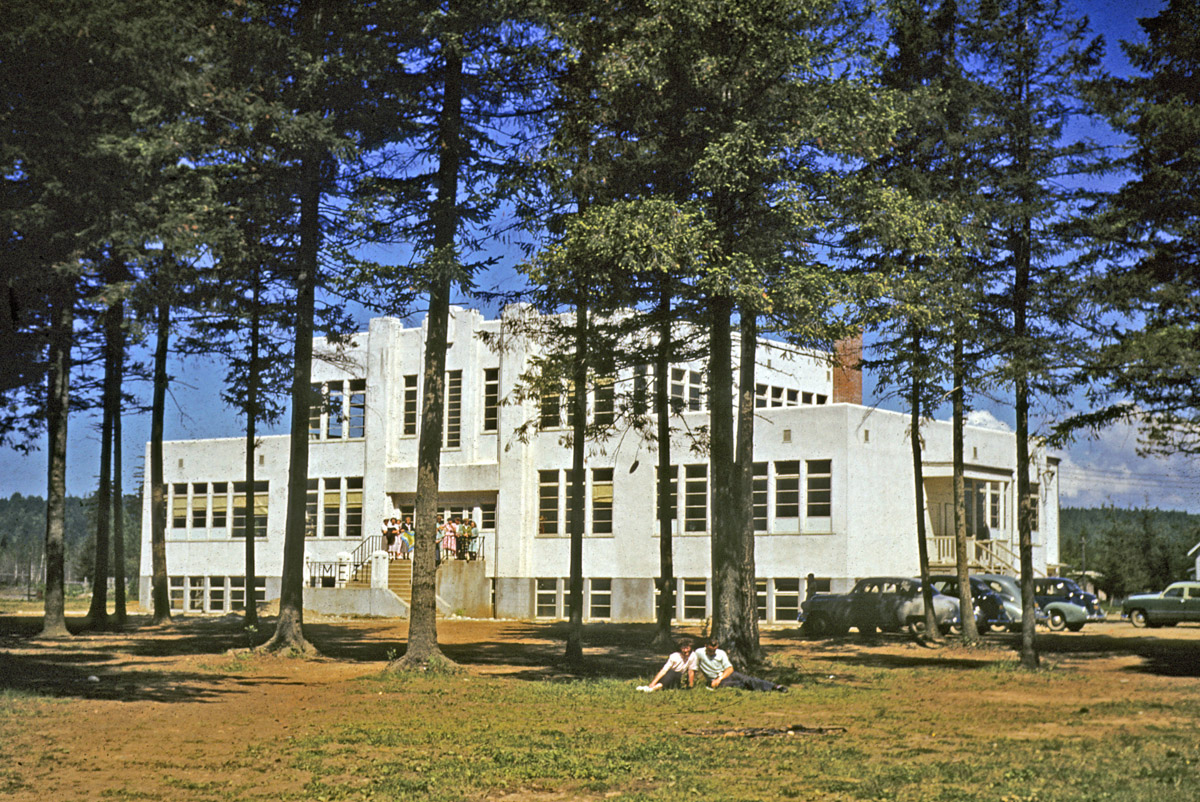Mennonite Education Institute
The Mennonite Educational Institute (MEI) began in 1944 to provide education aligned with Mennonite faith and values. Local leaders recognized the need for a school that preserved the Mennonite culture, language, and offered quality education. With support from Mennonite Brethren and General Conference Mennonite Churches, seven churches endorsed the school. To obtain government approval, representatives were elected to negotiate conditions, including no financial support, qualified teachers, and English as the primary language. Despite building restrictions during the war, MEI started with an addition to South Abbotsford Mennonite Brethren Bible School. The initial enrollment of 60 students decreased due to conscription, but MEI remained committed to providing education rooted in Mennonite values and cultural preservation, even in challenging circumstances.
* * *
Local leaders recognized the need to provide education for young Mennonites that aligned with their faith and values, as they were concerned that existing institutions did not fully uphold these principles. The School Committee, in its early minutes, outlined three main purposes for establishing the school: preserving the Mennonite faith and culture, maintaining the German language, and providing quality education. The support of Mennonite Brethren (MB) and General Conference Mennonite Churches in the Fraser Valley was sought, and seven churches decided to endorse the school.
To obtain government approval, three individuals—Cornelius Toews, George Sukkau, and Alex Bauman—were elected to represent the school in Victoria. Dr. Willis, the Deputy Minister of Education, laid out three conditions for granting permission: no financial support from the government, qualified teachers must be hired, and English must be used as the primary language of instruction. With these conditions agreed upon, the decision was made to move forward with establishing the school.
Due to the restrictions on obtaining building permits during the war years, the initial plan was to construct an addition to the existing South Abbotsford Mennonite Brethren Bible School to accommodate the first batch of students. The chosen location was at the intersection of Huntington and Gladwin Roads, an area where many Mennonite families had recently settled. Franz C. Thiessen, formerly from Winnipeg, took on the role of principal and teacher, while Isaak J. Dyck from Winkler, Manitoba, was hired as another teacher. Henry H. Nikkel was later added to the teaching staff, as the enrollment of 60 students surpassed expectations. However, conscription reduced the student total to 44, making it challenging for the $80.00 per student tuition to cover the salaries, despite the teachers receiving significantly lower pay compared to the local school district.
Thus, with determination and resourcefulness, MEI started its journey, providing education that reflected Mennonite values and fostering a sense of cultural preservation within the Mennonite community, even in the face of wartime limitations.
To obtain government approval, three individuals—Cornelius Toews, George Sukkau, and Alex Bauman—were elected to represent the school in Victoria. Dr. Willis, the Deputy Minister of Education, laid out three conditions for granting permission: no financial support from the government, qualified teachers must be hired, and English must be used as the primary language of instruction. With these conditions agreed upon, the decision was made to move forward with establishing the school.
Due to the restrictions on obtaining building permits during the war years, the initial plan was to construct an addition to the existing South Abbotsford Mennonite Brethren Bible School to accommodate the first batch of students. The chosen location was at the intersection of Huntington and Gladwin Roads, an area where many Mennonite families had recently settled. Franz C. Thiessen, formerly from Winnipeg, took on the role of principal and teacher, while Isaak J. Dyck from Winkler, Manitoba, was hired as another teacher. Henry H. Nikkel was later added to the teaching staff, as the enrollment of 60 students surpassed expectations. However, conscription reduced the student total to 44, making it challenging for the $80.00 per student tuition to cover the salaries, despite the teachers receiving significantly lower pay compared to the local school district.
Thus, with determination and resourcefulness, MEI started its journey, providing education that reflected Mennonite values and fostering a sense of cultural preservation within the Mennonite community, even in the face of wartime limitations.


